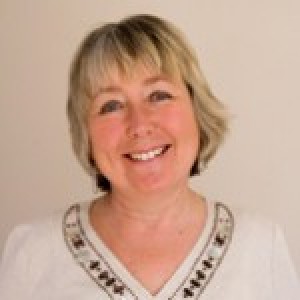 It may be drear outside at the moment, but the great thing about gardening is that you’re always looking forward. So it’s already summer in my head for I have just received some new dahlia tubers in the post. They may look like shrivelled brown things now, packed in plastic bags full of flyaway vermiculite, but once spring arrives they’ll be planted and begin their metamorphosis into fabulous flowers as showy as any exotic butterfly.
It may be drear outside at the moment, but the great thing about gardening is that you’re always looking forward. So it’s already summer in my head for I have just received some new dahlia tubers in the post. They may look like shrivelled brown things now, packed in plastic bags full of flyaway vermiculite, but once spring arrives they’ll be planted and begin their metamorphosis into fabulous flowers as showy as any exotic butterfly.
Dahlias, although frost-tender, don’t need tropical heat because they’re high altitude flowers mostly found in Mexico. They thrive on ambient warmth, rather like me, with evenly balanced day and night temperatures so a greenhouse with a frost-breaking heater is perfect. If you don’t have heat, cover your emerging dahlias with a double layer of fleece on cold nights. Start them off in mid-March by planting the tubers into John Innes no 2 and give them a good water and good light. Pinch out the tips when the growth begins to accelerate upwards and then plant them out in early June, once the nights have warmed up.
Give them an open space too, because they dahlias don’t like pushing up through other plants. Stake them with a tripod of three canes, with safety caps, and a couple of rows of string. Ideally there’ll be a space, perhaps vacated by tulips, or a spare bit of border. Mine go on to the allotment, because I use them as cut flowers and nothing is so wonderful to pick later in the year. With this in mind the Dutch have developed cut flower varieties with the Karma prefix and they do last longer in water. ‘Karma Choc’ AGM is a personal favourite.
The fact that between 35 and 42 species dahlias, depending who you believe, are found growing close to the equator where days and nights are of even length, makes them perfect for the second half of summer onwards. By then evenings are drawing in and cooler. If you deadhead, they’ll flower until the first frost. What other flower is so generous, or comes in so many colours and flower forms?
When it comes to colour and form the dahlia has a secret weapon. Many have an octoploid tendency, nothing to do with tentacles. It means that there are “eight times the basic haploid chromosome number” so when the bee gets busy and fertilisation takes place there are a lot of possible combinations. A good example of this diversity involves the classic red peony dahlia ‘Bishop of Llandaff’. This was launched and bred by Fred Treseder in 1928, but selected by Bishop Joshua Prichard Hughes. It’s an iconic dahlia, despite being almost a nonagenarian, because it’s strong and healthy with black-ferny foliage that almost outshines the warm-red flowers. Being semi-double it usually sets seed if left. The best named seedling is a waterlily named ‘David Howard’. This was selected from thousands by Suffolk nurseryman David Howard in 1958. The foliage is khaki and the fully double butterscotch-coloured flowers are known as decorative.
In all there are fourteen different groups and they include the spiky cactus, the soft waterlily, the petal-packed decorative, the single, the anemone and the collarette. These classifications, which have been around for a hundred years in most cases, have evolved to segregate dahlias into groups in order that they can be judged more fairly on a show bench. Exhibitionists like big blooms, so they deadhead and feed, and there are some good show bench varieties that are not suitable for the garden.
Should a really good dahlia fall between the groups the chances were that it would be shunned. It’s happening less now because more dahlia enthusiasts are growing them in the garden and not for exhibition.
In my time trialling dahlias, I’ve seen the popularity of single dahlias, such as Twyning’s After Eight’, get superseded by sultry flowers such as ‘Sam Hopkins’. Flower arrangers, led by Sarah Raven, adore the almost-blacks because they highlight so many colours. In recent years more gardeners and flower ladies have embraced lots of other colours too and I recommend a ragged pallid-yellow called ‘Gryson’s Yellow Spider’, which wooed our panel last year This can be found at Rose Cottage Plants ( www.rosecottageplants.co.uk ) run by Anne Barnard , who was also a dahlia judge for the RHS. I’ve also ordered an asymmetrical soft-orange named ‘Waltzing Mathilda’. Ann places her tubers in paper bags, but if yours are in plastic when you buy them remove them from the bag, otherwide they might rot.
Rose Cottage sell 3 tubers for a reasonable price ( roughly £6.00) and generally deliver in March. I prefer tubers to inch-high cuttings. It isn’t only the magical element of something that almost looks a potato in bad shape turning into something glorious, they get away better for me. Come August I know I’ll have bunches to give away!



